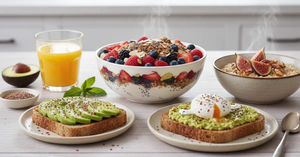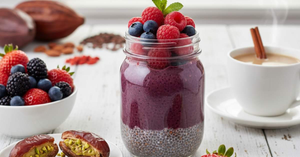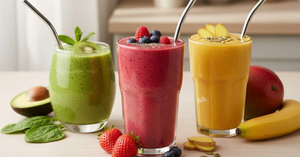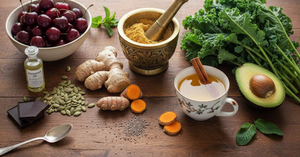“The body achieves what the mind believes.” – Napoleon Hill
In today’s fast-paced world, chronic stress has become an almost accepted part of daily life. Whether it stems from work pressure, emotional burnout, or information overload, persistent stress can take a serious toll on both physical and mental health. Over time, stress affects hormonal balance, digestion, sleep, and immunity. Amid the many available relaxation techniques, guided visualisation also known as guided imagery has gained attention as a simple yet deeply effective practice for calming the mind and body.
Guided visualisation is a relaxation technique that involves mentally picturing calming, positive images or scenarios often with the help of a narrator, therapist, or audio recording. The goal is to guide the mind away from stress and towards peace, focus, and balance.
During a session, individuals may be asked to imagine walking through a quiet forest, sitting beside a calm lake, or watching waves on a beach. By immersing themselves in such mental imagery, their body begins to mimic the physiological state associated with that scene lower heart rate, slower breathing, and relaxed muscles.
It bridges the gap between mind and body, showing how mental images can produce measurable physical effects.
The human brain cannot always distinguish between a vividly imagined experience and a real one. When someone visualises a calming scene, the same neural pathways activate as if the experience were actually happening. This phenomenon engages several key biological mechanisms that reduce stress:
In essence, guided visualisation works like a mental rehearsal for calmness, training the body to respond differently to stress triggers.
You don’t need special equipment or prior meditation experience to begin. What matters most is consistency and immersion. Here’s a simple step-by-step approach:
Choose a place where you won’t be disturbed for at least 10–15 minutes. Sit or lie down comfortably.
Begin with slow, steady breaths. Inhale through your nose, hold for a moment, and exhale through your mouth. This helps center the mind and prepare the body for relaxation.
Imagine a place where you feel completely safe and at ease. It might be a mountain valley, a childhood garden, or a peaceful seashore. Picture every detail colors, sounds, temperature, and textures.
Visualisation becomes more powerful when sensory input is vivid. Hear the rustle of leaves, feel the warmth of sunlight, or sense the cool breeze. The more realistic the imagery, the deeper the relaxation response.
Allow yourself to remain in that mental space for several minutes. If the mind wanders, gently bring it back to the scene without judgment.
When ready to finish, slowly count backward from five, open your eyes, and stretch lightly. Reflect on the sense of calm before returning to daily tasks.
Over the past few decades, scientific studies have confirmed that guided imagery can positively influence physical and mental health outcomes. Some of the most notable benefits include:
Multiple clinical trials have shown that guided visualisation can significantly reduce perceived stress and anxiety levels. It lowers blood pressure and stabilizes heart rate variability both reliable indicators of stress regulation.
Visualisation before bedtime promotes the release of melatonin and helps individuals transition smoothly into sleep. For people struggling with insomnia, guided imagery has shown comparable effects to relaxation therapy.
In hospital settings, guided imagery is often used alongside medication to manage chronic pain, post-surgical discomfort, and even labor pain. Patients report lower pain scores and faster recovery.
Some studies indicate that regular visualisation can improve immune markers such as natural killer cell activity and antibody response. This makes it valuable for individuals under chronic stress or recovering from illness.
By strengthening neural pathways involved in attention and emotion regulation, guided visualisation helps individuals handle stress more effectively and maintain emotional balance.
While professional sessions or guided audio tracks can be helpful, self-practice is equally effective when done consistently. To make guided visualisation part of your routine:
Over time, visualisation becomes a natural coping mechanism, something the mind automatically turns to when stress arises.
Despite its simplicity, guided visualisation is often misunderstood. Let’s address a few common myths:
Guided visualisation is safe for most people, but it should complement not replace medical treatment. Those with severe anxiety, PTSD, or dissociative symptoms should practice under professional supervision to ensure comfort and grounding.
Pregnant individuals, patients with heart conditions, or those undergoing major medical treatments can also safely use guided imagery, provided they inform their healthcare provider.
Guided visualisation is more than a relaxation trick, it’s a mind-body therapy with measurable medical benefits. By using the imagination as a bridge to inner calm, this practice helps reprogram the body’s response to stress. With daily practice, it enhances focus, improves sleep, and nurtures emotional balance.
In a world that constantly demands more, guided visualisation teaches us that true peace often begins within.
About PeriodSakhi
PeriodSakhi is your trusted companion for understanding your menstrual health. With easy-to-use tools, it helps you track your periods, ovulation, fertility, moods, and symptoms, while providing insights into your overall reproductive and hormonal health. PeriodSakhi also serves as a supportive online community where women can share experiences, find reliable information, and access expert-backed guidance on menstrual health, PCOS, pregnancy, lifestyle, and more.
Disclaimer
The views, thoughts, and opinions expressed in this article/blog are solely those of the author and do not necessarily reflect the views of PeriodSakhi. Any omissions, errors, or inaccuracies are the responsibility of the author. PeriodSakhi assumes no liability or responsibility for any content presented. Always consult a qualified medical professional for specific advice related to menstrual health, fertility, pregnancy, or related conditions.
Start the conversation
No comments yet. Start the conversation by leaving the first comment!





